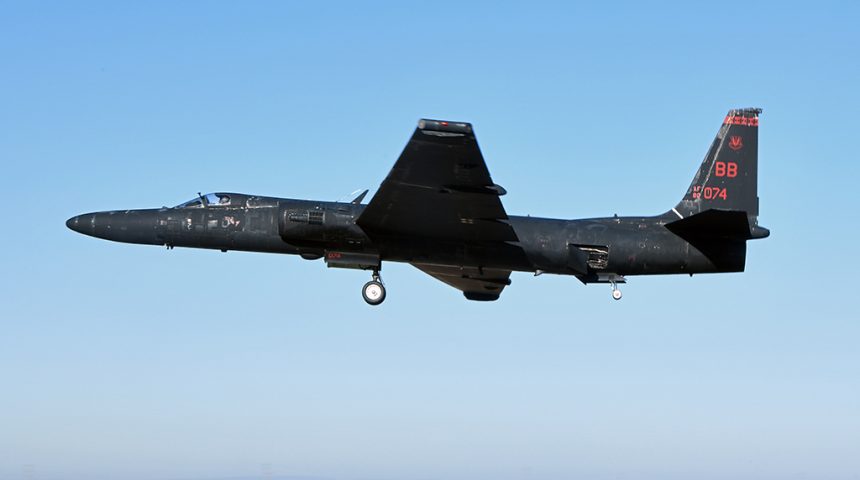This was the first time the open-source container-orchestration system has flown on an operational major weapon system in the Department of Defense.
In what was the first time the system has flown on an operational major weapon system in the Department of Defense, the U-2 Federal Laboratory has successfully flown a Kubernetes cluster on a U-2 Dragon Lady assigned to the 9th Reconnaissance Wing at Beale Air Force Base, California, during a local training sortie on Sept. 22, 2020.
But, what is Kubernetes and why is it relevant?
Kubernetes is an open-source container-orchestration system for automating computer application deployment, scaling, and management. Although it was originally designed by Google and is now maintained by the Cloud Native Computing Foundation, many cloud-based services, including the most famous ones made available by the large CSPs (Cloud Service Providers) use a branded version of Kubernetes.
Kubernetes is used to deploy and automate microservice-based applications. As opposed to the past when applications were monolithic, current applications are made of collections of services (or micro-services) each one implementing a different feature of the application. For instance, one service in an app is used to implement the search on a website, another one implements the comment section, another one implements the payments and so on. A microservice-based application enables quick and reliable delivery of complex applications and make the change management easier. In fact, each microservices is loosely coupled to the others and can be independently tested, optimized and deployed. This means that developers can test and update the code of a service without touching or affecting the rest of the micro-services. As you may imagine, this approach has significantly shortened the lifecycle of software.
The “U-2 Proof Of Concept”
Kubernetes clusters can be used to scale out application workloads across different hosts to meet the increased demand on the client side. And this seems to be the use case tested on the U-2: Kubernetes was used to pool available on-board computing power to meet advanced system and software needs. In particular, the U-2’s Kubernetes environment could run advanced machine learning algorithms on four individual, flight-certified computers on board the aircraft without any negative effects on the aircraft’s flight or mission systems.
“The successful combination of the U-2’s legacy computer system with the modern Kubernetes software was a critical milestone for the development of software containerization on existing Air Force weapon systems,” said Nicolas Chaillan, the Air Force Chief Software Officer, in a public release.
“I’m incredibly proud of the U-2 Federal Lab and our Recce Town Airmen that made flying Kubernetes on the U-2 possible,” said Col. Heather Fox, 9th Reconnaissance Wing commander. “This is a milestone achievement that paves the way for rapid experimentation as we continuously work to bring the future faster and increase battlespace awareness for our Airmen. The integration of Kubernetes onto the U-2 capitalizes on the aircraft’s high altitude line of sight and makes it even more survivable in a contested environment. We look forward to working with other platforms across the DoD to export this incredible capability.”
Kubernetes an overkill for combat aircraft?
One may still argue that deploying Kubernetes on a 65-year old aircraft is not cost-effective, since the benefits it delivers to a legacy aircraft are probably not worth the effort.
While installing Kubernetes on old hardware can be complicate and time-consuming because aircraft of the previous generations run monolithic software that does not leverage the power of containerization, the benefits of microservices orchestration will be significant in the future when there will be aircraft designed to run cloud native software from the beginning.
In fact, the U.S. Air Force and DoD are just conducting a series of tests to validate the concept and prepare to field Kubernetes as well as other Open Source systems on future weapons systems.
Last year, at KubeCon 2019 in San Diego, Nicolas Chaillan presented the testing conducted with an F-16 SIL and explained the impact of the platform for software teams across the military.
With the legacy waterfall process, it might take years for new code to make it all the way from the developers to production. And even then, updates, testing and even security reviews relied heavily on human effort. A waste of time and labour that can be prevented with automation already used in the commercial sector, to accelerate the time to market. In the future, with the proper automation and CI/CD (Continuous Integration/Continuous Development) processes, the U.S. military will be able to make new features/upgrades/fixes available to the warfighters in a similar fashion and frequency as Apple or Google publish an update for your smartphone apps on their public stores.
BTW, the upcoming B-21 Raider stealth bomber will also rely on Kubernetes.
H/T Steve Trimble for the heads-up!









